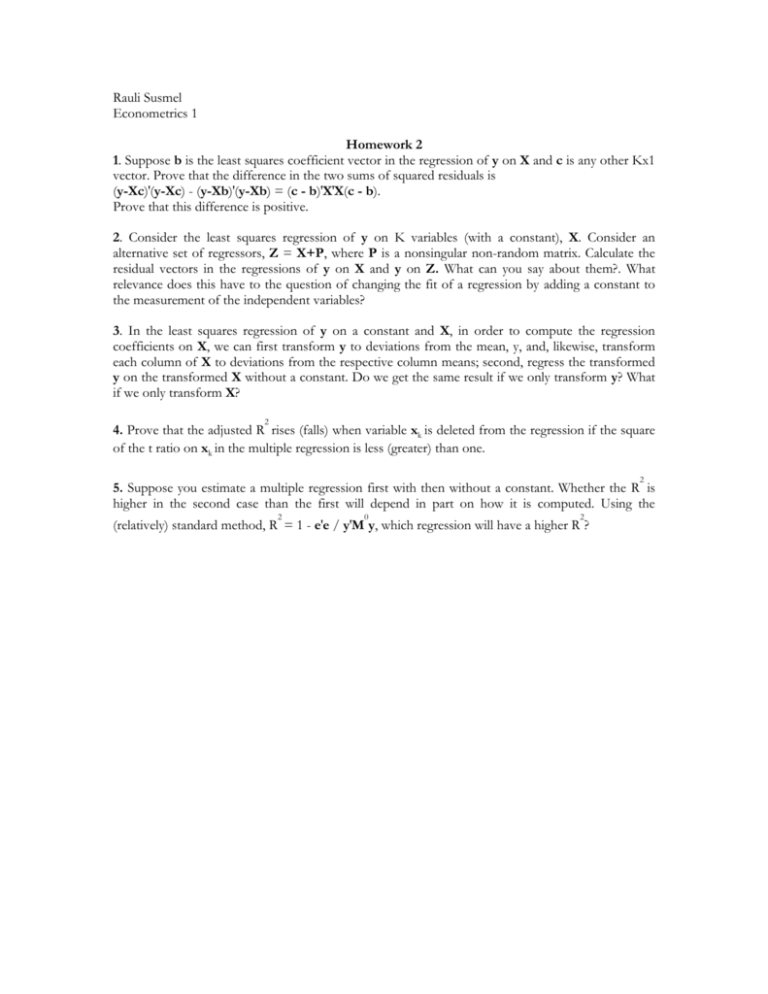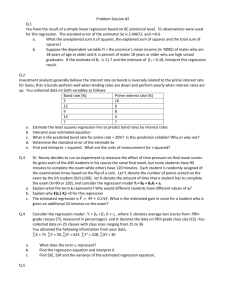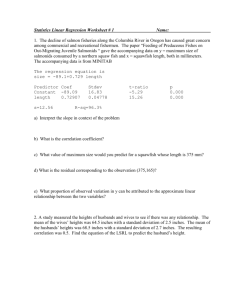Assignment 2
advertisement

Rauli Susmel Econometrics 1 Homework 2 1. Suppose b is the least squares coefficient vector in the regression of y on X and c is any other Kx1 vector. Prove that the difference in the two sums of squared residuals is (y-Xc)′(y-Xc) - (y-Xb)′(y-Xb) = (c - b)′X′X(c - b). Prove that this difference is positive. 2. Consider the least squares regression of y on K variables (with a constant), X. Consider an alternative set of regressors, Z = X+P, where P is a nonsingular non-random matrix. Calculate the residual vectors in the regressions of y on X and y on Z. What can you say about them?. What relevance does this have to the question of changing the fit of a regression by adding a constant to the measurement of the independent variables? 3. In the least squares regression of y on a constant and X, in order to compute the regression coefficients on X, we can first transform y to deviations from the mean, y, and, likewise, transform each column of X to deviations from the respective column means; second, regress the transformed y on the transformed X without a constant. Do we get the same result if we only transform y? What if we only transform X? 2 4. Prove that the adjusted R rises (falls) when variable xk is deleted from the regression if the square of the t ratio on xk in the multiple regression is less (greater) than one. 2 5. Suppose you estimate a multiple regression first with then without a constant. Whether the R is higher in the second case than the first will depend in part on how it is computed. Using the 2 0 2 (relatively) standard method, R = 1 - e′e / y′M y, which regression will have a higher R ?











